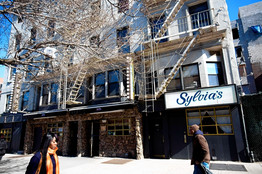Central Harlem Gains Ground

Harlem has been the nexus of African-American culture for about a century. Rich with iconic institutions and a storied past, it has also seen its share of neglect, high crime and struggling schools.
In recent years, Central Harlem has experienced a revival. New businesses have moved in, ranging from upscale restaurants and wine bars to cutting-edge boutiques. Dozens of condominiums have sprouted around the neighborhood, adding state-of-the-art apartments to its mix of townhouses and brownstones.
“Central Harlem is a very vibrant and busy neighborhood, and our developers years ago saw lots of opportunities there to build reasonably priced housing,” says Stephen Kliegerman, executive director of development marketing for Halstead Property, which represents 22 new buildings in the area and has a few others in the works. “There’s great transportation, great history and a lot of opportunity for redevelopment in Central Harlem because it was an area that, for years, had not been paid attention to.”
Prices in the neighborhood remain affordable. But the area’s recovery from the downturn hasn’t been as fast as other Manhattan neighborhoods. The median sales price for co-ops, condos and houses in the fourth quarter was $534,581—a 19% drop from the year-earlier quarter—compared with $836,750 for all of Manhattan, where prices rose 9% from the 2009 quarter, according to StreetEasy.com.
Drawbacks remain for some buyers. “You don’t have, say, the kind of amenities where within two or three blocks you can find anything you want,” says Sylvia Hueston of Rutenberg Realty. But she adds that “those amenities will definitely appear.”
Parks: Central Harlem abuts the northernmost portion of Central Park. The 30-acre Morningside Park, designed by Frederick Law Olmsted and Calvert Vaux, includes playgrounds, ball courts, cliff-like landscaping and a seasonal weekly farmer’s market. The neighborhood also encompasses part of the 20-acre Marcus Garvey Park.
Schools: Central Harlem is part of District 5, where 72% of students met state standards in math in 2009, compared with 42.4% in 2006. On the English exam, 59.1% were proficient in 2009, compared with 32.3% four years earlier.
The neighborhood has seen a strong push for charter schools, including the Future Leaders Institute Charter School and the five Harlem Success Academy charter schools. The nonprofit Harlem Children’s Zone operates three Promise Academy elementary charter schools. Private schools include Harlem Academy, where tuition is on a sliding scale.
Restaurants: Frederick Douglass Boulevard is developing into a restaurant row. Options include 5 and Diamond, featuring American fare made with local and organic ingredients; Harlem Society Coffee, a café and lounge; and Londel’s Supper Club, an upscale Southern restaurant with live jazz on the weekends. Locals and tourists alike are drawn to Sylvia’s, the famed soul-food spot. The neighborhood also has many African restaurants, including Africa Kine.